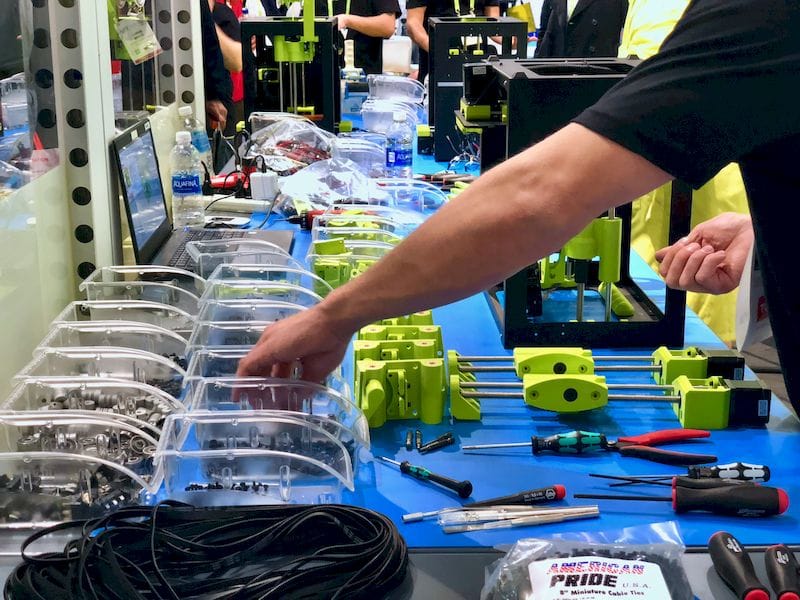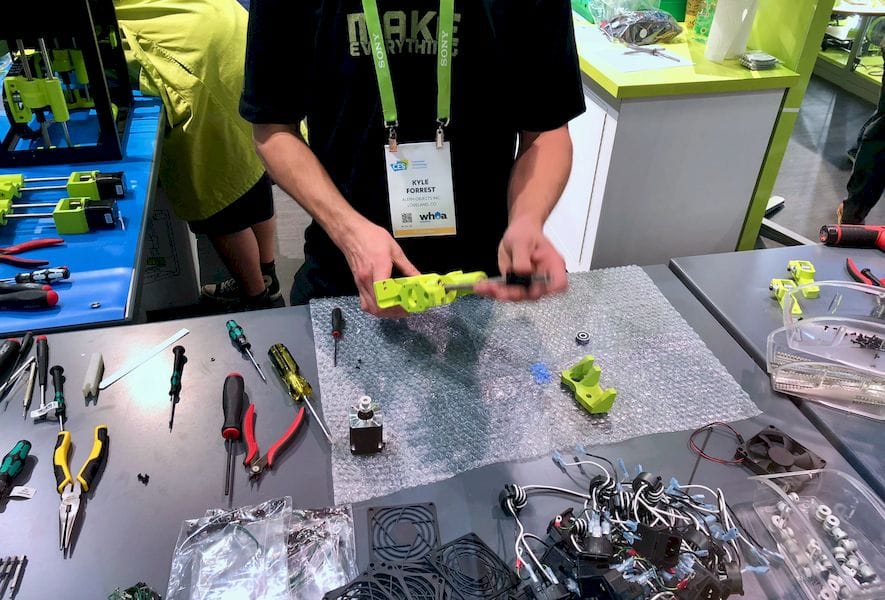
At CES Aleph Objects provided a demonstration we had not seen displayed to the public.
The company showed off its suite of desktop 3D printers by arranging a number of models in a 9-unit array, and put them to work.

On making 3D printers.
Well, not exactly. The machines were running continuously producing the 3D printed components of their machines. They were, in effect, making themselves.
But a pile of plastic parts does not a 3D printer make. There are a number of other components required, including metal rods, wiring, circuit boards, etc. Thus Aleph Objects also had on hand several folks from their manufacturing department who were assembling all these components into fully functional 3D printers.

This was done behind a glass wall so curious show attendees could see the process of producing a 3D printer.
We’re told by Aleph Objects CEO Harris Kenny that the assemblers were “actual makers” from the factory floor, so they could produce machines of the same quality as at their home base.
However, the nine machines on hand at the show were but a slim portion of what takes place at the actual factory, where there are apparently 155 3D printers busy producing parts for new equipment.
Why demonstrate their product in this way? I think there are a couple of important reasons.
Firstly, the unusual demonstration was sure to gather eyeballs, which is actually hard to do at CES, where dazed attendees wander through tens of thousands of exhibits with their minds blurring more at each incomprehensible object seen. The action-packed Aleph Objects display certainly accomplished that, as we witnessed many people observing and then asking questions about what was taking place.
Secondly, the demonstration was a real-life display of how desktop 3D printers can be used for actual manufacturing. It may be surprising, but there are still many people in industry that feel the entire topic of 3D printing is inappropriate for their operation, and that desktop 3D printers are mere toys.
The Aleph Objects display was a means of speaking to product manufacturers in a way that related more directly to their needs. Interestingly, the CES hall in which Aleph Objects was located just happened to have a number of automobile manufacturers present. We saw several of their representatives prowling through the 3D print zone, suggesting that Aleph Objects’ strategy could have been successful.
You must be wondering what happened to all the 3D printers Aleph Objects built during the show? Given away to happy attendees, all of them.
Via LulzBot

